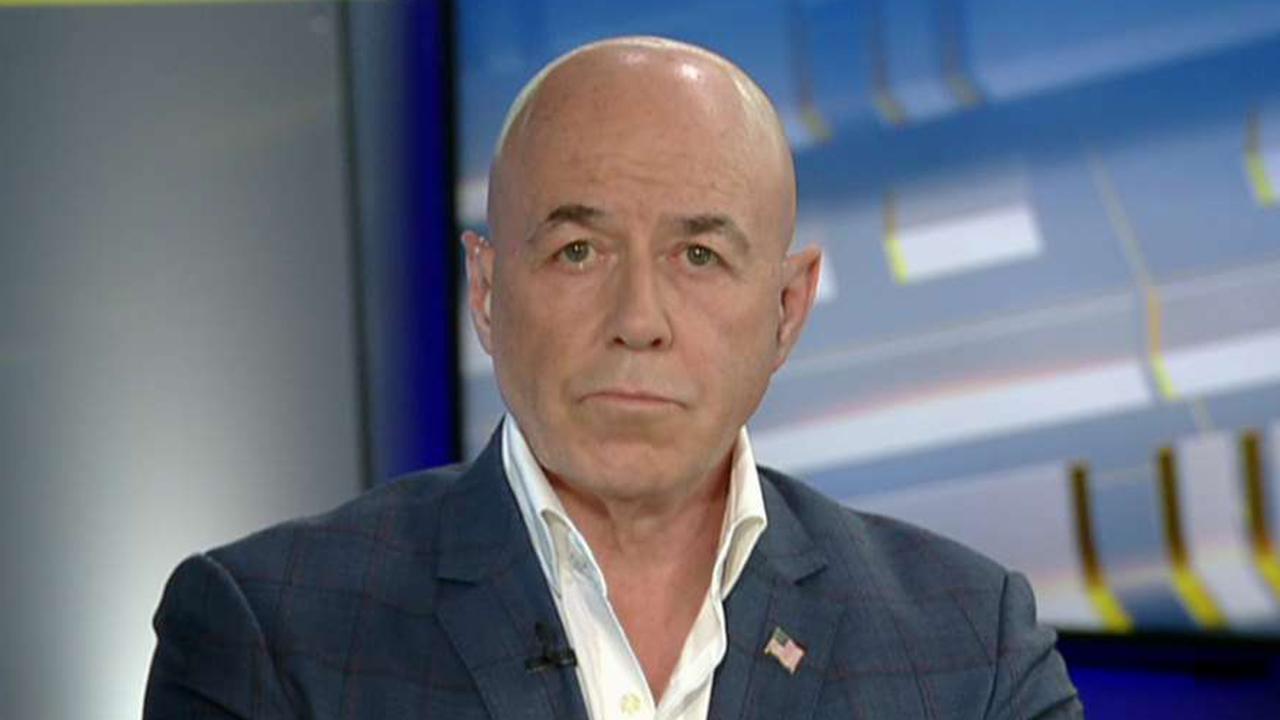Analyzing The GOP's Legislative Push During The Trump Presidency

Table of Contents
The Trump presidency (2017-2021) witnessed a dramatic reshaping of the American political landscape, largely driven by the Republican Party's ambitious legislative agenda. This period, marked by both significant successes and resounding failures, offers a compelling case study in the complexities of legislative power and political strategy. This article analyzes the GOP's legislative push during this transformative era, examining its key initiatives and their lasting impact.
Tax Cuts and Jobs Act of 2017: A Landmark Achievement?
The Tax Cuts and Jobs Act (TCJA) of 2017 stands as a cornerstone of the GOP's legislative efforts under Trump. This sweeping tax reform bill significantly altered the American tax code, aiming to stimulate economic growth through substantial tax cuts for businesses and individuals.
Key Provisions and Economic Impacts:
- Corporate Tax Rate Reduction: The TCJA slashed the corporate tax rate from 35% to 21%, the lowest rate in decades. This was touted as a major incentive for businesses to invest and expand, creating jobs and boosting economic activity.
- Individual Income Tax Changes: The act also included changes to individual income tax brackets, standard deductions, and itemized deductions. These changes generally lowered tax rates for many individuals, though the impact varied depending on income level and family structure.
- Economic Effects: While proponents predicted significant GDP growth and job creation, the actual economic impact of the TCJA remains a subject of debate. While GDP growth did occur in the years following its passage, attributing this solely to the tax cuts is difficult, given other economic factors at play. Critics pointed to increased national debt as a significant drawback.
- Income Inequality: Concerns were raised regarding the potential for the TCJA to exacerbate income inequality, with the largest benefits accruing to high-income earners and corporations. Studies on this topic continue to produce mixed results.
- Long-Term Fiscal Implications: The TCJA's long-term fiscal implications are significant and potentially problematic. The substantial tax cuts resulted in a considerable increase in the national debt, raising concerns about future economic stability and the solvency of government programs.
Political Ramifications and Public Opinion:
Public opinion on the TCJA was sharply divided along partisan lines. While Republicans largely praised the tax cuts as a success, Democrats criticized them for benefiting the wealthy disproportionately and increasing the national debt. Polling data from the time reflected this polarization, with little change in overall public approval even after the anticipated economic benefits failed to fully materialize. The TCJA’s impact on the Republican Party's electoral prospects was mixed; while it did not lead to a sweeping electoral victory, neither did it result in significant electoral losses.
Healthcare Reform and the Affordable Care Act
The Republican Party's efforts to repeal and replace the Affordable Care Act (ACA), also known as Obamacare, proved to be a significant legislative failure during the Trump presidency. Despite repeated attempts, the GOP failed to pass a viable alternative, highlighting internal divisions and the challenges of achieving legislative consensus on such a complex and politically charged issue.
Repeal and Replace Efforts:
Numerous attempts were made to repeal and replace the ACA, each encountering significant obstacles. These obstacles included internal disagreements within the GOP regarding the preferred approach to healthcare reform, as well as staunch opposition from Democrats and various interest groups. The lack of a unified Republican strategy and the complexity of the issue hampered their efforts. Alternative proposals, ranging from market-based reforms to more conservative approaches, ultimately failed to gain sufficient support.
Consequences of Failed Reform:
The failure to repeal and replace the ACA had significant consequences. Millions of Americans continued to rely on the ACA for health insurance coverage. The lack of legislative action left the ACA largely intact, though some aspects were weakened through executive actions. The long-term implications for healthcare access and costs remain a subject of ongoing debate and policy discussions. The continued existence of the ACA stands as a major setback for the GOP’s legislative agenda under Trump.
Judicial Appointments and Conservative Ideology
One of the most significant and enduring legacies of the Trump presidency was the appointment of numerous conservative judges to federal courts, including three Supreme Court justices. This reshaping of the judiciary reflects a key aspect of the GOP's legislative push, aiming to solidify a conservative judicial philosophy for decades to come.
Supreme Court Nominations and Impact:
The appointments of Justices Neil Gorsuch, Brett Kavanaugh, and Amy Coney Barrett shifted the balance of the Supreme Court significantly to the right. These appointments have already had a noticeable impact on key legal decisions, particularly in areas such as abortion rights, religious freedom, and gun control. The long-term impact of these appointments will likely be felt for many years to come, potentially altering legal precedent and shaping future legal and policy debates.
Lower Court Appointments and Shifting Judicial Landscape:
Beyond the Supreme Court, the Trump administration appointed hundreds of conservative judges to lower federal courts. This widespread judicial reshaping has had a substantial effect on the overall judicial landscape, influencing the interpretation and application of federal law at various levels. The implications for future legal challenges and policy debates across a broad spectrum of legal issues are considerable and far-reaching.
Immigration and Border Security Policies
Immigration and border security were central to the Trump administration's agenda, resulting in various legislative initiatives and executive actions aimed at tightening border control and restricting immigration. However, these policies faced significant political opposition and legal challenges.
Key Legislative Initiatives and Executive Actions:
The administration pursued numerous policy changes related to immigration, including efforts to build a wall on the US-Mexico border, increased border enforcement, and stricter immigration enforcement policies. These actions generated significant political debate and legal challenges. Many of these efforts were blocked by Congress or overturned by the courts.
Impact on Immigration and Border Security:
The effectiveness of the administration’s immigration and border security policies remains a topic of intense debate. While some measures aimed at increasing border security were implemented, the overall impact on immigration flows and border security is complex and difficult to quantify definitively. The policies raised significant humanitarian concerns, particularly concerning the treatment of asylum seekers and separated families.
Conclusion
The GOP's legislative push during the Trump presidency was marked by both substantial achievements and notable failures. The Tax Cuts and Jobs Act, while economically impactful, also raised concerns about the national debt and income inequality. Efforts to repeal and replace the Affordable Care Act ultimately failed, leaving the ACA largely intact. However, the appointment of numerous conservative judges, particularly to the Supreme Court, represents a lasting legacy with far-reaching implications. Finally, immigration and border security policies generated substantial political debate and raised humanitarian concerns. Analyzing the GOP's legislative push under Trump provides crucial insights into the dynamics of American politics and policy-making in a highly polarized environment.
To gain a deeper understanding of the political landscape shaped by the GOP's legislative initiatives during the Trump era, continue your research with [link to relevant resource]. Further analysis of the GOP's legislative push is crucial for understanding the contemporary political climate.

Featured Posts
-
 Katsina Attack Leaves Nine Dead Including Policeman
May 27, 2025
Katsina Attack Leaves Nine Dead Including Policeman
May 27, 2025 -
 Usma Athmane Sahbane Quitte La Presidence Un Nouveau Chapitre S Ouvre
May 27, 2025
Usma Athmane Sahbane Quitte La Presidence Un Nouveau Chapitre S Ouvre
May 27, 2025 -
 Almanacco Del 23 Marzo Compleanni Santo Del Giorno E Proverbio
May 27, 2025
Almanacco Del 23 Marzo Compleanni Santo Del Giorno E Proverbio
May 27, 2025 -
 Five Individuals Detained Drug And Weapon Seizures
May 27, 2025
Five Individuals Detained Drug And Weapon Seizures
May 27, 2025 -
 Lagard Potvrzhdava Podkrepata Na Ets B Za Blgariya Po Ptya Km Evrozonata
May 27, 2025
Lagard Potvrzhdava Podkrepata Na Ets B Za Blgariya Po Ptya Km Evrozonata
May 27, 2025
Latest Posts
-
 Banksy Artwork Makes Debut In Dubai Exhibition
May 31, 2025
Banksy Artwork Makes Debut In Dubai Exhibition
May 31, 2025 -
 Bernard Kerik His Wife Hala Matli And Their Family
May 31, 2025
Bernard Kerik His Wife Hala Matli And Their Family
May 31, 2025 -
 Dubai Hosts First Ever Banksy Art Exhibition
May 31, 2025
Dubai Hosts First Ever Banksy Art Exhibition
May 31, 2025 -
 Bernard Kerik Family Life A Look At His Wife And Children
May 31, 2025
Bernard Kerik Family Life A Look At His Wife And Children
May 31, 2025 -
 Banksys Art Dubai Showcases Works For The First Time
May 31, 2025
Banksys Art Dubai Showcases Works For The First Time
May 31, 2025
